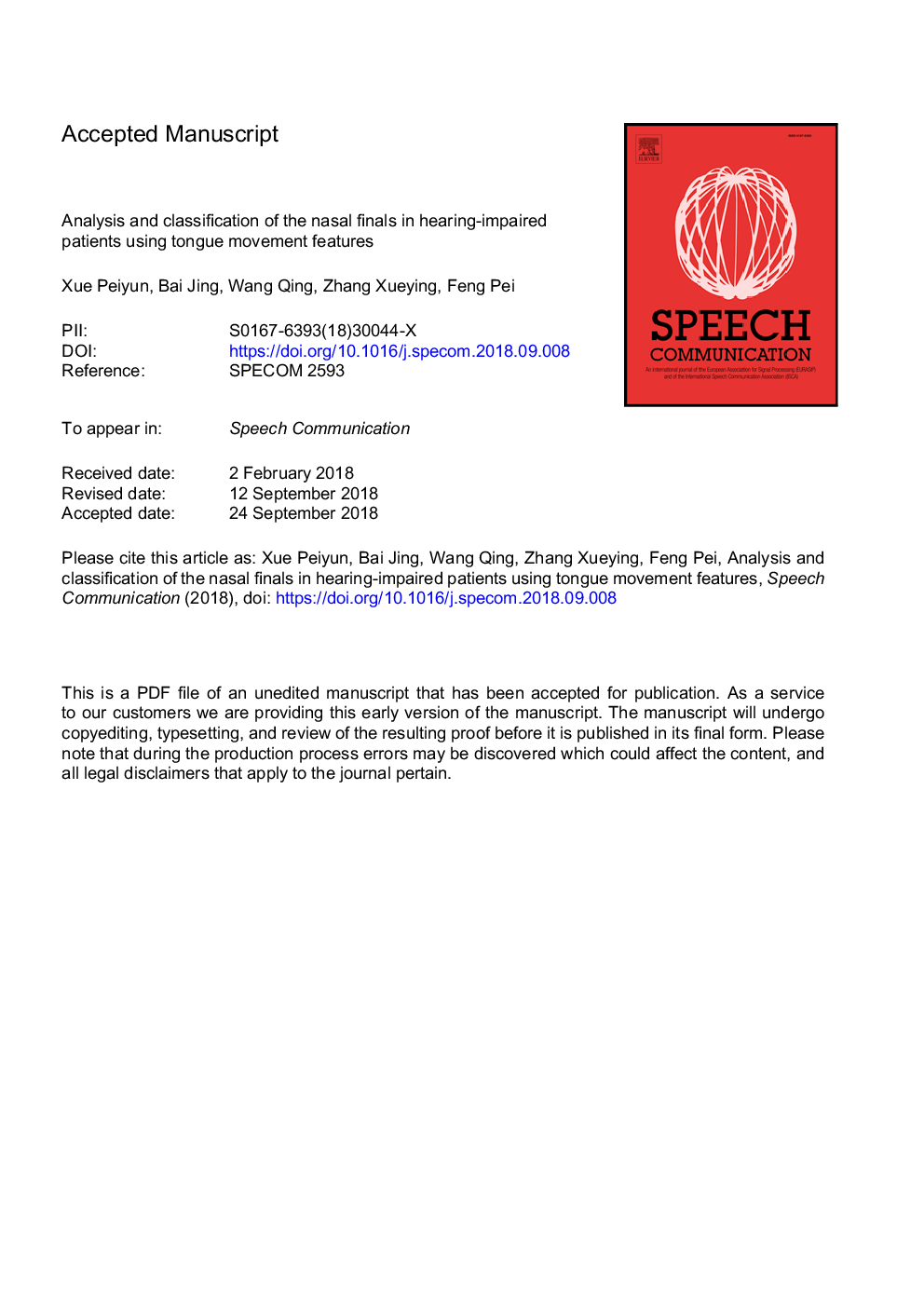| Article ID | Journal | Published Year | Pages | File Type |
|---|---|---|---|---|
| 11001566 | Speech Communication | 2018 | 30 Pages |
Abstract
This paper sheds light on the articulatory movements of participants with or without hearing impairment during nasal finals. In this study, the patient group included 10 young adults with hearing impairment (HI), and the control group included 12 young adults with normal hearing (NH). All participants produced six nasal finals in Mandarin under the same condition, chosen from the Mandarin Chinese phonetic alphabet. Six kinematic features (displacement, duration, maximum velocity, minimum velocity, mean velocity and standard deviation of velocity) were extracted and analyzed in the HI group and compared with those of the NH group. We performed an independent samples t-test to investigate significant differences in the means of the normal and pathological samples. We investigated the speech recognition of HI and NH samples using machine learning approaches (support vector machine, radial basis function network, random forest and C4.5). 10-fold cross-fold validation experimental results help to indicate the feasibility of speech samples. Based on experimental data from this small sample, a classification accuracy of 87.12% was obtained via {displacement, duration} using random forest.
Related Topics
Physical Sciences and Engineering
Computer Science
Signal Processing
Authors
Peiyun Xue, Jing Bai, Qing Wang, Xueying Zhang, Pei Feng,
